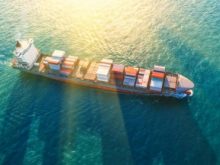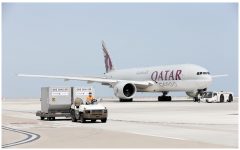 Shipping accounts for two to three per cent of global greenhouse gas emissions so manufacturers and retailers are no longer just considering what appears in national targets. Even though individual governments are not on the hook for these supply chain emissions, some of Australia’s largest companies are getting ready.
Shipping accounts for two to three per cent of global greenhouse gas emissions so manufacturers and retailers are no longer just considering what appears in national targets. Even though individual governments are not on the hook for these supply chain emissions, some of Australia’s largest companies are getting ready.
BHP is the world’s largest charterer of ships, which means marine emissions are a problem for future profits and reputation. Rio Tinto is in the same boat as iron ore makes up a third of Australian exports. They have lined up a small number of LNG-fuelled bulk carriers as an immediate solution to lower emissions.
Some say green ammonia made with hydrogen, using a water electrolysis process powered by solar and wind energy, could become the marine fuel of choice one day. Nuclear power could also be a clean but more expensive and currently illegal source of electricity for producing hydrogen and ammonia through electrolysis.
Australia will still be shipping almost $100 billion a year in coal and gas by 2050, according to federal government modelling.
Breaking News
- Mahindra, LSC unite to build centers to promote skill development in logistics
- Qatar Cargo puts into ops another B777-200F
- ‘Focus on food quality & infra in Indian cold chain sector’
- ‘Enhancing efficiency, reliability of rail cargo crucial’
- Emirates SkyCargo joins Pharma.Aero
- NCR adds 2.3 mn sq ft in Grade A Warehousing space: Colliers
- CMA CGM Air Cargo accelerates development with three B777Fs
- Boeing makes largest purchase of blended SAF
- Industry Leaders unite at GoComet Odyssey Edition 2
- DB Schenker continues to expand airline API connections
- PayCargo, Nallian unite to streamline cargo deliveries
 Cargo Breaking News
Cargo Breaking News


